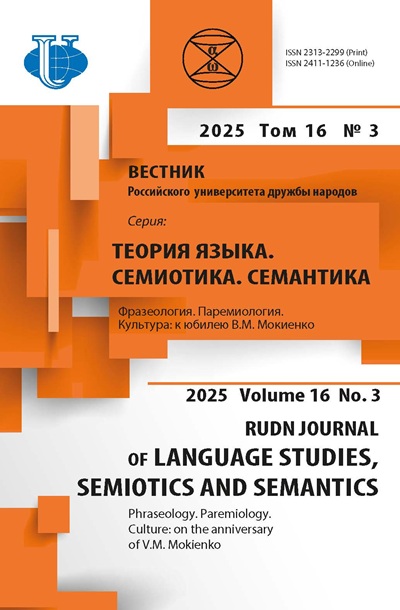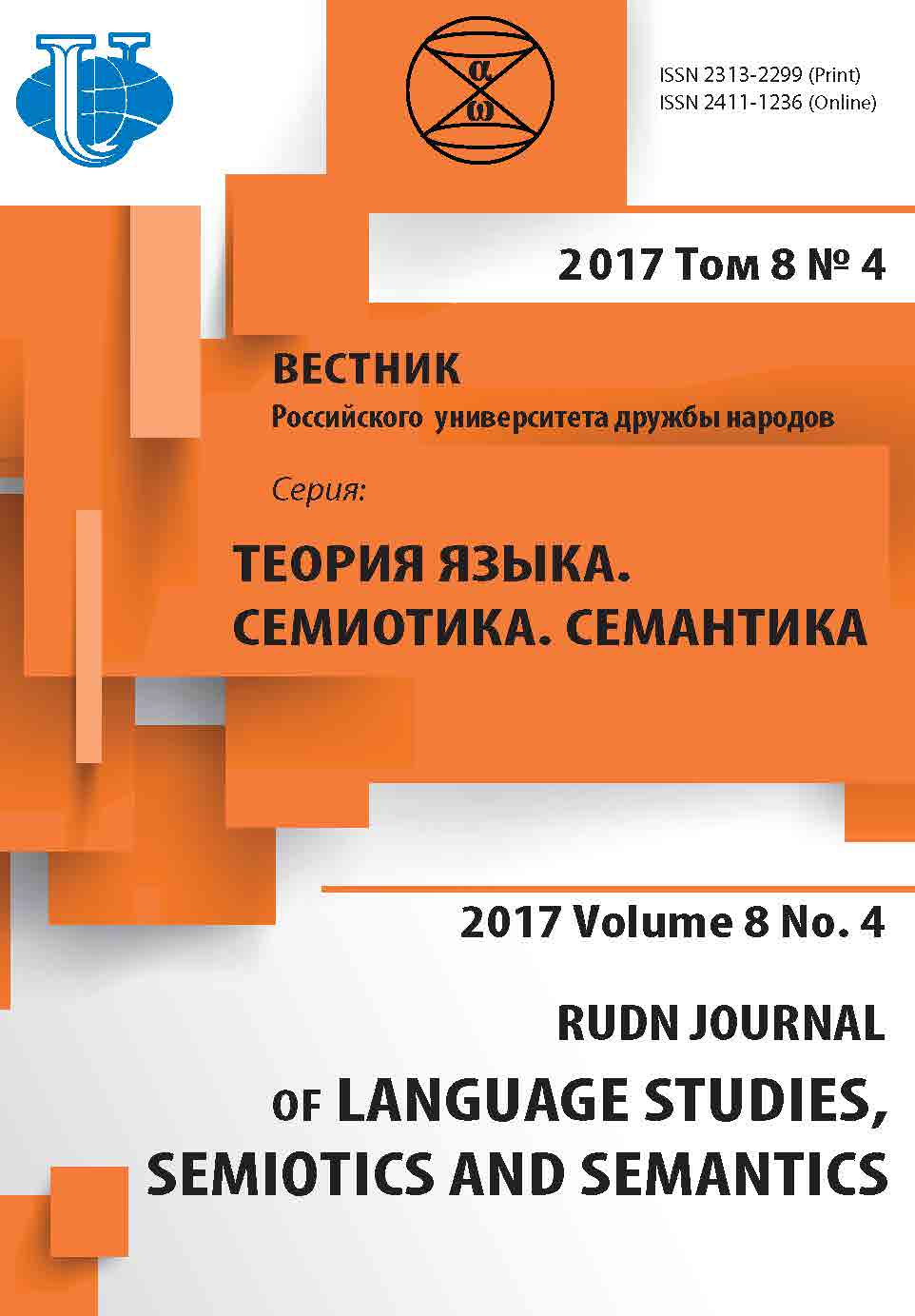ЛАТИНСКИЙ ЯЗЫК В ТАТУ ИНДУСТРИИ
- Авторы: Чинина ДС1
-
Учреждения:
- Московский государственный областной университет
- Выпуск: Том 8, № 4 (2017)
- Страницы: 985-992
- Раздел: СТАТЬИ
- URL: https://journals.rudn.ru/semiotics-semantics/article/view/17977
- DOI: https://doi.org/10.22363/2313-2299-2017-8-4-985-992
- ID: 17977
Цитировать
Полный текст
Аннотация
В предоставленной статье изучается место латинского языка в современной тату индустрии. Рассматривается вопрос о том, является ли латынь одним из самых распространенных языков, использующихся в сфере боди арта. Приводится классификация фраз на латыни, которые чаще всего используются для татуировок. В работе проводится статистическое исследование, направленное на выявление самых популярных форм применения латинского языка для татуировок. Тема статьи является актуальной, так как посвящена изучению субкультурного кода, важное место в котором играет такой мертвый язык, как латинский. Объектом исследования является латинский язык в современной тату индустрии. Предметом работы служат способы применения латыни в боди арте. Источниками исследования послужила сеть Интернет, а также научная литература. В результате работы делается вывод о том, насколько действительно распространено использование латинского языка в современном искусстве татуировки. Также говорится о том, что интерес к исследованию методов использования латыни в современном искусстве может дать понимание о степени интеграции латинского языка сегодня. Статья может быть использована в курсах социолингвистики и латинского языка.
Ключевые слова
Об авторах
Д С Чинина
Московский государственный областной университет
Автор, ответственный за переписку.
Email: dariaexplosion@gmail.com
Чинина Дарья Сергеевна, магистрант Московского государственного областного университета, кафедры теоретической и прикладной лингвистики; научные интересы: древние языки и культуры, социолингвистика, компаративистика, английская филология
105005, г. Москва, ул. Радио, д. 10А, РоссияСписок литературы
- Бедненко Г.Б. Пространство мифа // Прикладная юридическая психология. 2008. № 4. С. 37-44.
- Валуйцева И.И. Сакральные языки и фактор времени // Вестник МГОУ. Серия: Лингвистика. Москва, 2005. № 6. С. 14-21.
- Иловайский Д.И. Древняя история. Средние века. Новая история. Москва: Современник, 1997. Режим доступа: http://www.bibliotekar.ru/polk-8/47.htm Дата обращения 15.07.2017.
- Карасева Т.А. Историческая фонетика латинского языка. Грамматический комментарий к латинским текстами VII-I веков до н. э. Изд. 2-е, испр. и доп. Москва: «Греко-латинский кабинет» Ю.А. Шичалина, 2003.
- Латинский язык: Учебник для педагогических институтов по специальности «Иностранные языки» / В.Н. Ярхо, З.А. Покровская, Н.Л. Кацман и др.; под ред. В.Н. Ярхо, В.И. Лободы. 5-е изд., стер. Москва: Высшая школа, 1998.
- Максименко О.И. Поликодовые компоненты субкультур (на примере хиппи и хип-хопа) // Военно-гуманитарный альманах: Лингвистика. Язык. Коммуникация. Перевод. Вып. 1. Том 1. Материалы X Международной научной конференции по актуальным проблемам теории языка и коммуникации 1 июля 2016 г. / под общ. ред. Н.В. Иванова. Москва: ИД «Международные отношения», 2016. С. 29-36.
- Малинаускене Н.К. (2001). Введение в историю латинского языка. Общие вопросы и доклассический период. Курс лекций. Москва: Греко-латинский кабинет, 2001.
- Мельникова Л.А. Татуировка как репрезентация социокультурных кодов визуальности (на материалах исследования молодежных субкультур города Владивостока): автореф. дисс.. канд. культ. Комсомольск-на-Амуре, 2015.
- Памятники средневековой латинской литературы IV-IХ веков / пер. с латинского М.Е. Грабарь-Пассек, И.П. Стрельниковой, С.А. Аверинцева и др. Москва: Наука, 1970.
- Хухуни Г.Т., Беляева И.Ф., Валуйцева И.И., Вековищева С.Н. Лингвистика и лингвисты: прошлое и настоящее. Москва: ИИУ МГОУ, 2013.
- Шабага А.В. Исторический субъект в поисках своего Я. Москва: Изд-во РУДН, 2009.
Дополнительные файлы












